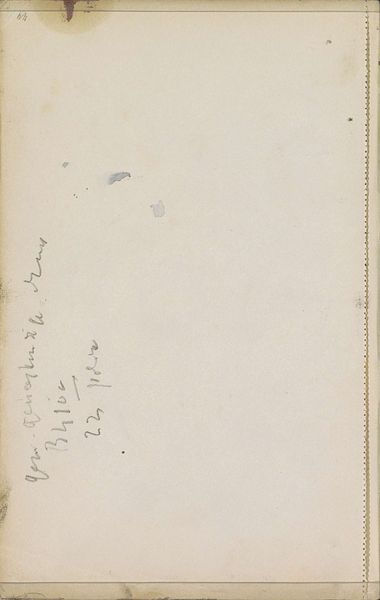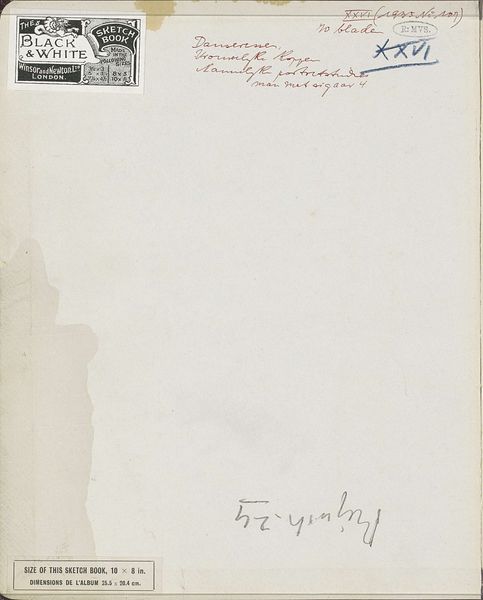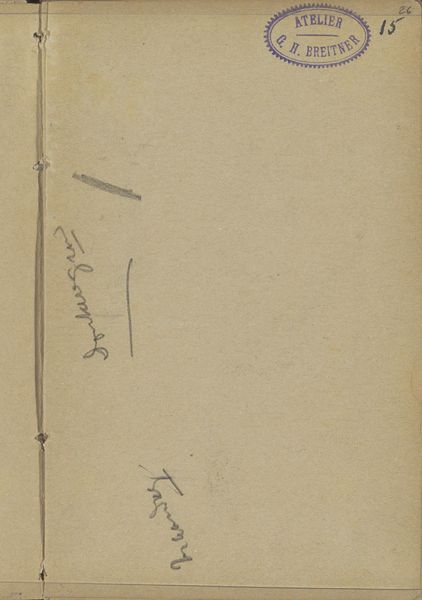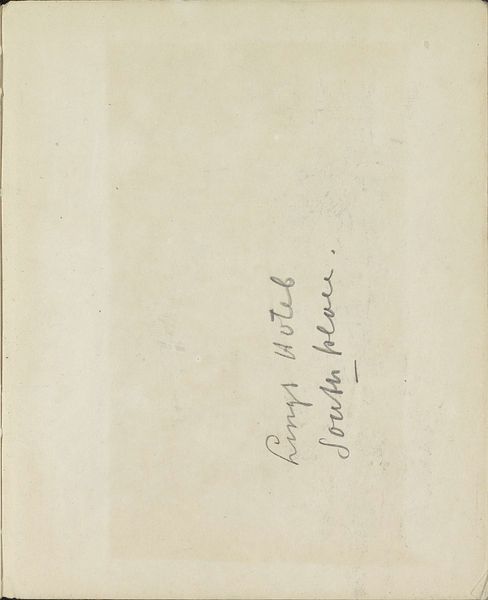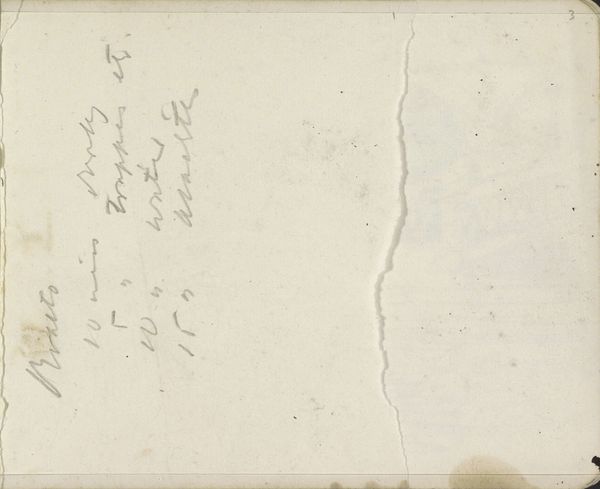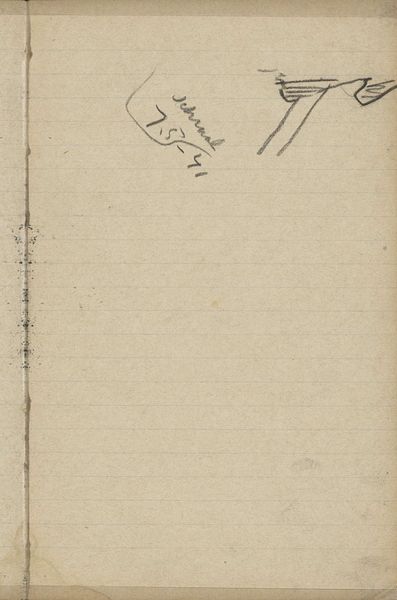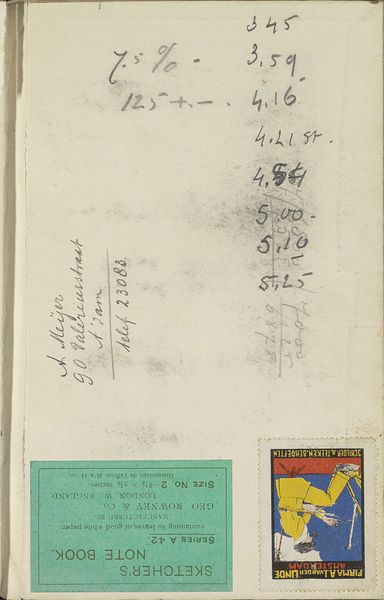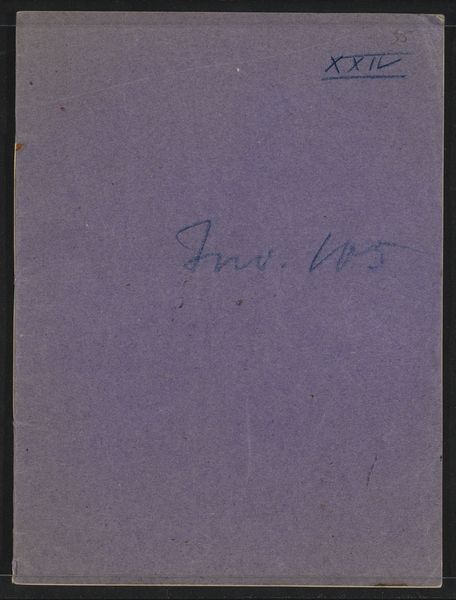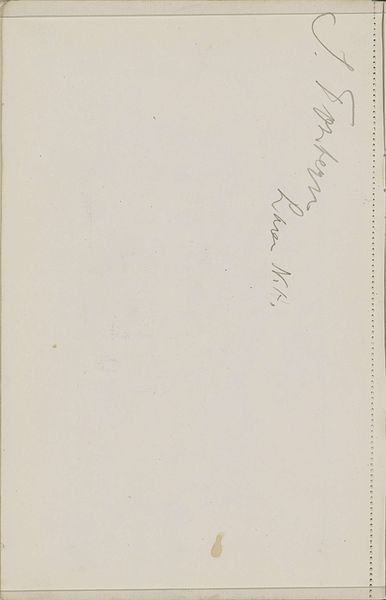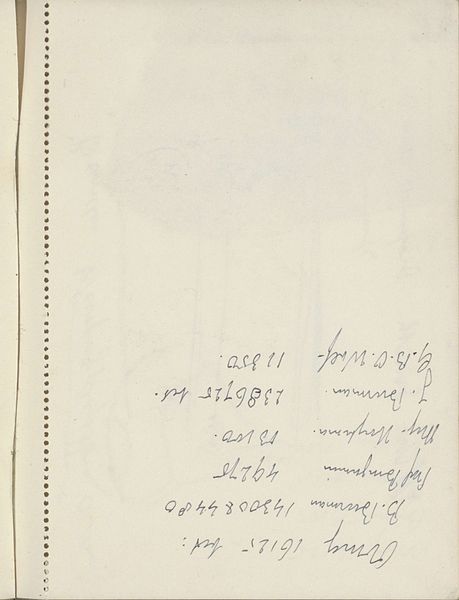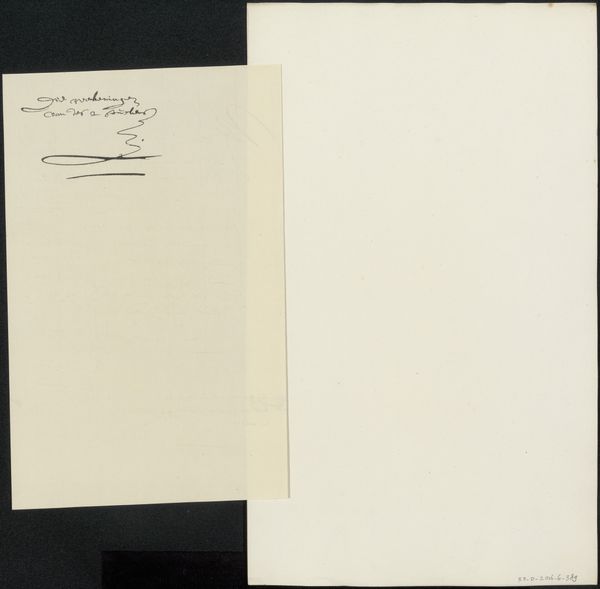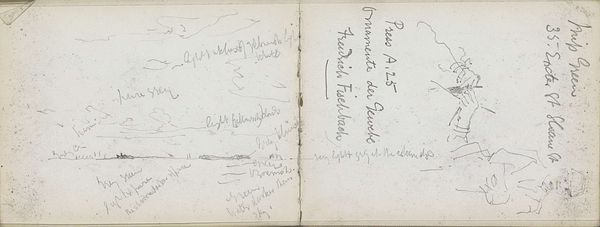
Bruine envelop voor vignetten: Venus Vignet voor boek 'L'art Hollandais contemporain' van Paul Fierens 1932 - 1933
0:00
0:00
graphic-art, print, paper, typography, ink
#
art-deco
#
graphic-art
#
ink paper printed
# print
#
paper
#
typography
#
ink
Dimensions: height 219 mm, width 269 mm
Copyright: Rijks Museum: Open Domain
Curator: Here we have Leo Gestel's "Bruine envelop voor vignetten: Venus Vignet voor boek 'L'art Hollandais contemporain' van Paul Fierens," dating from 1932-1933. It's currently held in the Rijksmuseum. Editor: My first impression is one of fragility and intimacy. It feels like a private artifact, something you'd discover tucked away in an old drawer. The folds of the paper and the handwritten notes give it a sense of immediacy. Curator: It's an intriguing piece, isn't it? A brown envelope acting as a container for, essentially, a commercial art commission. Gestel, a prominent figure, producing something so… functional. It points to the practical realities artists faced. Editor: Precisely! This resonates with me. We often separate "fine art" from the commercial. This shows they were deeply intertwined. What paper did he use, what inks? These things would affect the printing quality, the perceived value of the book, his reputation. Curator: It does prompt one to think about the cultural context. The interwar period, a burgeoning art market, artists navigating new forms of patronage. A piece like this reveals that delicate balance. Was it common for designers at that time to keep the preparatory envelopes? Editor: Probably not. The survival of something so ephemeral invites reflection on labour itself. It speaks to the often unseen work supporting art production—preparatory sketches, proofs. The artist created something on demand, but there are more objects and the relationship around the making of that object. Curator: True, and this "envelope" challenges the typical narrative of artistic genius. The act of producing imagery involved economic and social considerations. He must get paid for that type on lettering too! Editor: Absolutely. Gestel's sketch transcends mere functionality. It's about material conditions, the social context, and the means of producing art that we now revere. Curator: I find myself considering Gestel’s role as not just an artist, but a contributor within a larger network. This provides insights into the infrastructure of the artistic world. Editor: For me, it’s the intimacy that stays with me. It’s more than a brown paper: it's about recognizing the work to support larger industry with more recognition.
Comments
No comments
Be the first to comment and join the conversation on the ultimate creative platform.
